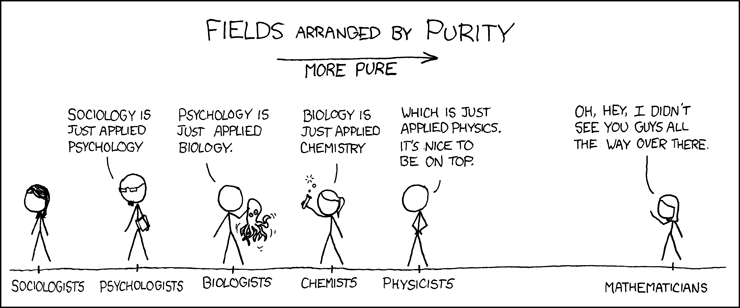
 )
)It is both conventional wisdom and a statistical reality that gender representation is not equal in all STEM (science, technology, engineering & mathematics) disciplines. When I enrolled at Carnegie Mellon, a school known for its STEM programs, nearly twenty (!) years ago, the student body was well aware of the distributions. Variations on “There’s a guy for every girl… and then another guy for that guy” or (ladies speaking about men) “The odds are good, but the goods are odd” circulated widely lest we forget. (In fairness, the 2:1 implied ratio was already shifting towards 1:1 at the time, and is now around 11:9.)
Once I got to my biology classes the story was completely different. If anything, the bio department had a 2:1 female-to-male ratio. My graduate school experience was similar, with a gender distribution that skewed female, and the majority of my colleagues in public health are women. The data suggest my experience is typical, so what makes biology different from other STEM fields? A new study observes that female representation in a field is negatively correlated with how widely it is believed the field requires innate brilliance.
That summary proposes changing perceptions about disciplines and the relative importance of intelligence and hard work. We would also be better off changing the perception that women are less likely to have innate intelligence.
STEM or otherwise, how do you see your field perceived with respect to you-got-it-or-you-don’t attributes? Do you think that affects who is recruited or welcomed?
Andy has worn many hats in his life. He knows this is a dreadfully clichéd notion, but since it is also literally true he uses it anyway. Among his current metaphorical hats: husband of one wife, father of two teenagers, reader of science fiction and science fact, enthusiast of contemporary symphonic music, and chief science officer. Previous metaphorical hats include: comp bio postdoc, molecular biology grad student, InterVarsity chapter president (that one came with a literal hat), music store clerk, house painter, and mosquito trapper. Among his more unique literal hats: British bobby, captain’s hats (of varying levels of authenticity) of several specific vessels, a deerstalker from 221B Baker St, and a railroad engineer’s cap. His monthly Science in Review is drawn from his weekly Science Corner posts — Wednesdays, 8am (Eastern) on the Emerging Scholars Network Blog. His book Faith across the Multiverse is available from Hendrickson.

Leave a Reply